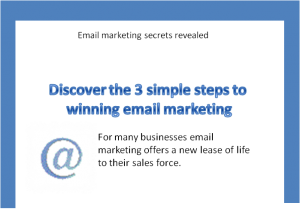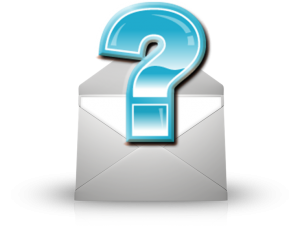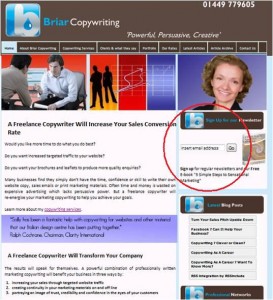Entries Tagged 'email copywriting' ↓
January 26th, 2011 — copywriting tips, email copywriting, email marketing, freelance copywriter, marketing

A new year is a time for resolutions, a lot of which probably only last a few days at most before they are broken.
But just because 2010 is over you shouldn’t just forget about it. Now is a great time to reflect on what happened last year, discover what worked for you and what didn’t. Once you have the answer to those questions you can begin to plan your email marketing strategy for 2011.
Email marketing for 2011
To help you make sure you enjoy successful email marketing campaigns this year I have listed below a few suggestions that might make all the difference.
Now’s the time to try something new to help you enhance your results from last year. So without further ado, here are my suggestions:
1. Remember mobile
One thing many companies forget is how their emails are being read.
More and more people will first become aware of your email on their mobile phone.
How do you decide whether to open and email or not? You probably look at who sent it to you first, followed by the subject line—if it looks interesting you’ll open it. If it doesn’t catch your attention it’ll probably remain unread.
Boost your email’s chances of being read by adding text above your header:

Therefore when the email appear on their phone they will see who it’s from, the subject line and the text ‘Email marketing secrets revealed’.
2. Hook line and sinker
The subject line of your email will ultimately determine whether it is opened or not.
It has to be intriguing, promise something new/important or offer them something that’s going to make their lives easier or help their business.
But once you have them hooked it is just as important to make sure the body of your email provides them with the answers.
Using a strong subject line but then talking about something different in the email will dissolve any confidence they had in you.
Make sure that what your subject line promises, your email delivers.
3. Drop off zone
How long should your email be before your reader dozes off?
An email that goes on and on and on will bore the pants of your recipients so if you have a lot of information you want to get across, add a teaser in the email and then link out to the full article so if they want to learn more, they can.
Everyone is busy and if you constantly send out mind-numbingly long emails you’re going to get a lot of unsubscribers.
4. Call to action
You call to action is vital because it asks your reader to take an action—call you, email you or buy now, book here…
Frequently they are seen as hyperlinked text inviting the reader to click it. But how about using a button instead? It stands out more and there’s something compelling about seeing a button – you just have to press it.
5. Proofread
A simple thing but something that’s not done often enough.
There’s nothing worse than sending out your email only to then discover a prominent typo.
Make sure you speak to your public and not the pubic, offer to nurture your clients but don’t neuter them.
An email full of typos will do untold damage to your reputation, so read it carefully before hitting send.
These 5 simple suggestions could help your 2011 email marketing campaign go with a bang. Try them out and see how you get on.
These tips are brought to you by Sally Ormond, freelance copywriter, blogger and social media fanatic.
December 24th, 2010 — copywriter, email copywriting, email marketing, freelance copywriter, internet marketing, marketing

Email marketing can be an incredibly effective way of communicating with your customers and prospective customers.
When someone initially opts-in to your marketing list they wait in eager anticipation for your first email to land in their inbox. They continue to welcome your communications with open arms until, one day, the honeymoon period is over.
As time progresses you realise that your emails aren’t being opened as often (or at all); your messages are now unloved, unopened and unwanted.
What do you do?
Panic?
Send flowers?
Nope. When this happens it’s time to take action.
What to do when you get email marketing list fatigue
1. Look at your frequency
When they originally opted-in, you would have made it clear how often they would hear from you. Are you now sending emails more frequently?
If so, begin to scale back. There are only so many times people will want to see you in their inbox. Don’t be that nosy neighbour who’s always popping in – you know, the one you hide from under the kitchen table so they think you’re out.
2. Gone stale
Take a look at your past few emails. Are you covering the same type of information? Is their layout and content becoming too predictable? If so you may find that the perceived value of your emails has dwindled so it could be time to rethink your strategy.
3. Incoming!
Don’t bombard your readers. If you are launching new products or offers, stagger them. It’s never a good idea to announce 4 or 5 within the same month. Firstly people won’t want that number of emails from you and secondly, they’ll get confused.
4. What’s your subject line?
Have you gotten sloppy with your subject lines?
These hold the key to people opening your emails so if they are no longer appealing, your emails won’t get opened. Perhaps it’s time to have a rethink about your subject line approach (or call in a copywriter to help you generate fresh and appealing content).
5. No one’s home
We all, from time to time, change our email addresses.
If one of your recipients hasn’t engaged with your mailings (i.e. they haven’t opened it) for 6 months or more, send out a ‘reengagement’ email – something that forces an action if they want to remain on your list.
If you don’t hear anything it’s safe to say that either:
- The email address is no longer active, or
- They no longer want to receive your emails
So it may be time to remove them from your list.
6. Spam
When was the last time you checked your emails against spam filters?
It could well be that something is triggering your recipients spam filters so your emails aren’t even reaching their in box.
If you want your email marketing to continue to be successful, regular list maintenance is essential to ensure that:
- Your readers are happy with their content
- All email addresses are active
- You are avoiding spam triggers
- Your subject lines are being effective
December 10th, 2010 — copywriter, email copywriting, email marketing

Congratulations! You’ve made the decision to run an email marketing strategy. Every customer you have will become part of your campaign (or at least those that opt in) so you can always keep in touch with them to maximise your sales opportunities.
Great—but have you worked out how your strategy is going to work, what you’ll offer them and how you’ll present your information?
If your strategy is to work you can’t just sent out emails willy nilly without any thought. Equally, sending one out initially and then nothing for months also won’t work.
The idea behind email marketing isn’t just to sell things, it’s also there to help you build and enhance your customer relationships.
Sending emails at regular intervals will certainly help keep your clients interested in your services. Great information interspersed with offers will give a bit of variety. If your emails are constantly trying to sell your customers are likely to get a bit fed up so make sure you alternate them.
But other than that there are a few other things you can do with your email strategy to help build your relationships. Below are five suggestions that will add value and boost the effectiveness of your email campaigns.
1. Welcome, welcome
When someone first signs up for your emails make sure you send out a welcome email. Thank them for subscribing and give them some free and valuable information. This email is also a good opportunity to give them an outline of what they can expect to receive from you—email frequency, offers, information, competitions etc.
It’s also a great opportunity to start selling—incorporate a promotional offer as a thank you for signing up.
2. High days and holidays
There are no end of holidays throughout the year—Christmas, Easter, Mothers’ Day, Fathers’ Day etc. All present an ideal sales opportunity so make sure you have your offers ready and email in plenty of time.
3. Customer birthdays
Assuming you have a note of each customer’s birthday, you have yet another opportunity to add value to your relationship by offering them a special offer on their special day. Use subject lines such as Happy Birthday from Briar Copywriting, Your special birthday bonus etc.
4. Is everything OK?
Every once in a while it’s a good idea to send out a ‘maintenance’ email. You can ask for feedback about your service, whether they still want your emails etc. This will help you weed out ‘dead’ emails to ensure you are mailing to an active database and therefore maximising your ROI.
5. Sorry
Although this is last on the list it is possibly one of the most important emails you can send. No matter how careful you are something at sometime is likely to go wrong. But if dealt with quickly and efficiently, you could turn a negative experience into a positive one.
Make sure you send out an apology email. Explain what went wrong, if you can (depending on its seriousness) make it a bit light hearted and give an offer to say sorry.
Handled well, your email marketing strategy will boost your sales. Whether you write them in-house or utilise the services of a professional copywriter, the words within those emails will cement and enhance relationships and encourage your customers to open their wallets.
December 6th, 2010 — copywriter, email copywriting, email marketing

You may think writing email copy is easy.
But if you want your recipients to open your email, read it and act upon it your email content must hit the spot instantly.
But don’t be fooled into thinking the hard work starts when you sit down and begin to write; on the contrary, the work begins as soon as you make the decision to create an email marketing strategy.
Step 1 of your email marketing campaign
So far you’ve reached the decision you’re going to create an email marketing campaign.
Don’t jump in and start writing—before you start hitting your keyboard, stop and think about a few aspects:
- What are you selling?—this isn’t just about the product/service but rather then emotional aspect of what you’re selling (what will it make your readers feel like?)
- Who are you selling to?—think carefully about the type of person who will buy your product. What’s important to them?
- Why are you selling it now?—are there any trends you can tie it into?
- What do you want your reader to do?—this is your call to action. Think about how you want them to react (make an order, call you etc.)
Step 2 – get creating your content
Whether you decide to write the content yourself or hire in a copywriter, full consideration has to be given to the aesthetics of the email as well as what it will say to your reader.
So let’s take a look at the whole email package and how to create the biggest impact possible.
- Font – it might seem insignificant but the font you use can have a huge impact on whether your email is read or not. Use a sans-serif font such as Arial or Verdana as it’s much easier to read on a screen.
- Loud and proud – the only way to hear your email as your reader will is by reading it aloud. This will help you spot areas that don’t flow or appear stilted.
- De-clutter – when you write anything it is very easy to throw in unnecessary words. If you review your work you’ll find plenty of ‘thats’, ‘tos’ and various other words that aren’t needed. Read through and take out any superfluous words to create tighter copy.
- Rhetoric – utilise the power of rhetoric and incorporate the power of the three part list. They add punch and rhythm which will really make your words standout (remember Tony Blair’s ‘education, education, education’?)
- Fast paced – make sure every word counts and your reader is carried through your copy by using words such as ‘remember’, ‘but’, ‘consider’, ‘for example’ which constantly move your copy forwards.
- Variety – to keep your readers’ interest, vary your sentence length, don’t be afraid of using sentence fragments and keep your paragraphs short to grab their interest and keep their interest. Also make sure you include your most powerful benefits in a bulleted list.
- Benefits – make sure your copy distinguished between the benefits of your product and its features.
- Second person – make your writing personal by using the second person (i.e. you and your). This will make it appear as though you have written the email solely for the person reading it making an instant connection.
- Keep it short – many people don’t like reading off screen so make sure you keep your copy short.
Creating emails that will be read is not as easy as it sounds. But by using these tips will help you generate marketing emails that will capture your readers’ attention and get them to act.
August 30th, 2010 — copywriter, email copywriting, email marketing, freelance copywriter, marketing
 Email marketing is possibly the most important and effective marketing tool available to businesses today. It offers a way of regularly communicating with your customers to give them up to date information, telling them about new products and offers. Within seconds you can communicate with thousands of customers simultaneously – and that’s very powerful.
Email marketing is possibly the most important and effective marketing tool available to businesses today. It offers a way of regularly communicating with your customers to give them up to date information, telling them about new products and offers. Within seconds you can communicate with thousands of customers simultaneously – and that’s very powerful.
I have written numerous posts about email marketing in the past, such as:
How to build your email marketing list
Email marketing – Welcome
How to be an email spammer
How to become the King or Queen of email marketing
Consistent email marketing
10 words that will make people open your email
Email marketing – When’s the best time to send?
Boost your email open rate
So this time I want to address a question I am frequently asked by clients…
How often should I email my customers?
As we all know life is rarely simple, so you can probably guess what my answer is going to be….it depends.
Not very helpful I know, but it really does depend on your business type. What’s right for one person isn’t necessarily going to be right for the next. You have to find the right balance for you. Take a good look at your business and the products or services you offer – the frequency of your emails will dependly largely on:
- What you are offering your customers
- Who your customers are
- What you have to say
Common frequencies are quarterly, monthly, bi-monthly (i.e. once every two months), twice monthly, weekly and sometimes daily (or multiple times per day).
To help you out, here is a short guide to email frequency:
Quarterly
The businesses that opt for a quarterly mailing usually don’t have a vast amount to say. Perhaps their products or services don’t change regularly and they don’t have offers to make. Although some would argue some contact is better than none, I struggle to see the point of only making contact once a quarter. By leaving so much time between communications you run the risk the recipient forgetting who you are.
To be quite honest, if you are considering quarterly mailings I would think very hard about it. There’s almost no point in bothering.
Monthly
Many companies go for the monthly option because it is regular without seeming intrusive. Often the businesses who opt for this frequency don’t use their newsletter/email to sell things. Normally they are more concerned with imparting valuable knowledge on the recipient. Giving away great information regularly is an excellent way to build and strengthen relationships with your customers.
As a copywriter I send out a monthly newsletter which offers my readers hints and tips on copywriting, marketing and social media. It is free information that I am giving away and I never sell through it. By the way, if you want to get on the mailing list visit my website and sign up.

Twice a month
This is a compromise for those companies that want to make contact more than monthly but don’t have enough to say to make weekly contact. One of the benefits of this frequency is you can alternate the type of content you email. One could be giving away information whilst the next could be an offer on one of your products. That way your reader won’t feel as though they are constantly being sold to.
Weekly
Weekly emails are often sent by stores looking to sell. Whether they are High Street chains or independent shops, weekly emails enable them to communicate offers and new lines quickly and easily to their customers. Plus being retail outlets it won’t come as a surprise to the recipient that they are being sold something.
So these are the most common frequencies used. There are companies that email daily or even multiple times per day but you’d have to have a lot to say to be able to keep that up.
Keeping up with your chosen frequency is important. Your customers will grow to expect their next newsletter/email so if you have to miss one for any reason (e.g. holiday etc.) make sure you let them know. Just a simple one liner to say there’ll be no newsletter this month but service will resume as usual next month will keep them informed.
If you are not already doing it, give email marketing a try. Coming up with a constant stream of ideas and content can be a challenge, but the results make it worth while.
Sally Ormond – freelance copywriter





 Email marketing is possibly the most important and effective marketing tool available to businesses today. It offers a way of regularly communicating with your customers to give them up to date information, telling them about new products and offers. Within seconds you can communicate with thousands of customers simultaneously – and that’s very powerful.
Email marketing is possibly the most important and effective marketing tool available to businesses today. It offers a way of regularly communicating with your customers to give them up to date information, telling them about new products and offers. Within seconds you can communicate with thousands of customers simultaneously – and that’s very powerful.





